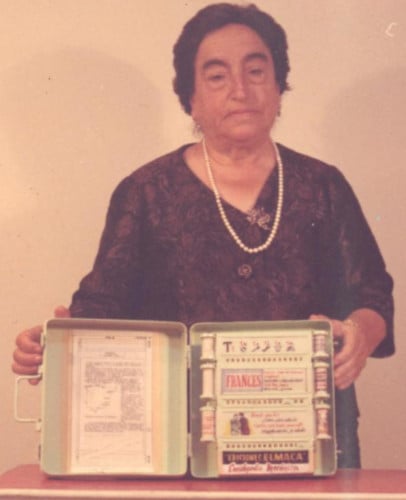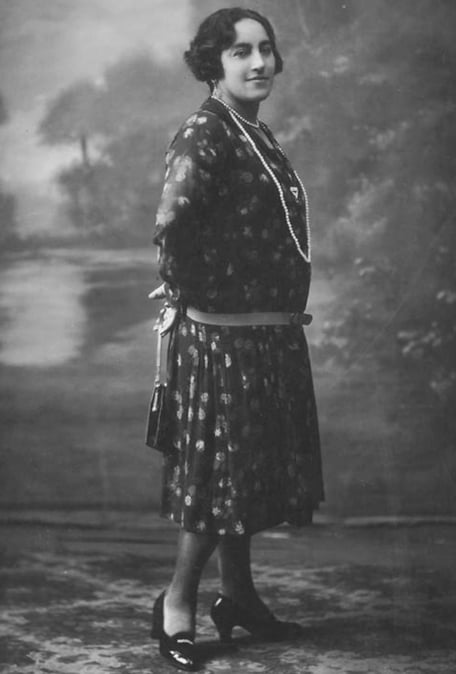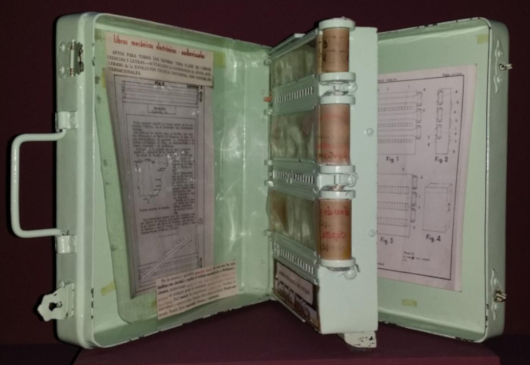
Who Was Angela Ruiz Robles?
Angela Ruiz Robles (1895-1975) was a Spanish teacher, writer, and the pioneer inventor of the mechanical precursor of electronic books. In 1949 Aguiree was awarded patent 190,698 for “Enciclopedia Mecánica”.
Ruiz Robles had a solution for the weight of textbooks carried by her students: a device consisting of reels with text and illustrations mounted under a magnifier framed in glass, and incorporating depictions of each topic. For reading in the dark, there was one light. Though the prototype remains enshrined at the National Museum of Science and Technology in A Coruña, it never went into production.
Quick Facts
- Net Worth
- NA
- Awards
- Cross of Alfonso X
- Bronze Medal at the Brussels International Exhibition
- Children
- Elena, Elvira, Maria
- Nationality
- Spanish
- Place of Birth
- Villamanin, Leon
- Fields of Expertise
- [“Mathematics”]
- Institutions
- University of Salamanca
- Contributions
- Mechanical Encyclopedia
Early Life
Angela was born into a wealthy family and completed her higher education at the Teacher Training College of León, where she taught between 1915 and 1916. It was in 1918 that her passion for teaching reached its peak when she accepted a position as a teacher in Santa Eugenia de Mandía. During the following decade, she successfully occupied this position.
She soon revealed herself as a great and dedicated teacher, different from what was known. She cared about her students; she went out of her way for them. Her desire to teach was sincere and steadfast.
As a teacher, she took responsibility for her students going beyond what was required of them. She would help those with special needs outside the established schedule, go to their homes after class to make sure they had learned, or provide additional instruction and support. She understood that every child has unique learning abilities, personalities, and insecurities.

‘Doña Angelita, who was known by her first name to all of us, was the perfect teacher. She never treated any student differently and always honored each individual learner’s needs.
Doña Angelita left Santa Eugenia de Mandiá in 1928, settling in Ferrol. In that city, she founded the Academia Elmaca, which she named after her three daughters: Elena, Elvira, and M Carmen.
During the night, she helped train people with few resources. In 1934, she became manager of the Escuela Nacional de Niñas del Hospicio, with the goal of helping abandoned girls to integrate into society. In 1945, she was a teacher at the Escuela Obrera which had no cost.
Ángela Ruiz Robles was a dedicated and tirelessly energetic woman who spent her life teaching and never needed anything more than that to make an active commitment to any project she undertook.
Career
Teacher
Between 1915 and 1916, she taught her first shorthand, typing, and business accounting classes in León. In 1917, Angela Ruiz was a teacher and director at the Gilberto Gordón School. That same year she obtained a teaching position in Santa Eugenia de Mandia for 1918.
From the first day her students realized that she was a different teacher, Doña Angelita sought to provide them with more personalized attention. Furthermore, she would visit students at their homes after school hours.
Marcelino Iglesias attended school in Santa Eugenia for 6 years. He lived there until 1928 and since then he always remained in the Galician countryside. In December 1925, people from his village awarded him a special award for his indisputable merits.
In 1934, she managed the National Girls School of the Hospice in Ferrol. This hospice cared for pregnant and abandoned women who would give birth there. The girls were given a trade to learn, which would help them integrate into society when they grew up.
Being the only woman teacher in a school for boys is an important part of her biography, she was already used to stealing snatched moments of sleep. But when her husband died unexpectedly, her situation became more precarious: there was nobody home with the girls at night, so she undertook a project that would occupy her time.
Inventor
Between 1938 and 1946, she wrote, lectured, edited, and republished sixteen books. She published three of them: “Compendium of Castilian Orthography”, “Castilian Orthography” (abbreviated), and “Modern Abbreviated Martinian Shorthand”.
Angela Ruiz needed to provide for her family and teach. She founded the Elmaca Academy (with her daughters Elena, Elvira, and Catherine). It provided classes for those opposed to customs, mail carriers, or telegraph operators. As well as entry into high business management studies.
The pass rate at Elmaca Academy was the highest in all of Spain. An essential part of her pedagogical method consisted of participation and conversations. However, there were no necessary tools for this with education from the ministry which did not exist or had not been provided.
In 1944, Ángela Ruiz started her Scientific-Grammatical Atlas project. Her goal was to teach Spanish grammar and spelling while making Spain more known across the world. This work led to other projects, one of them being “The steno machine”.
What Was Angela Ruiz Robles Known For?
Ángela Ruiz Robles, also known as one of the inventors and designers of an electronic book earlier than the e-book that is used today, filed a patent for the first prototype on December 7th, 1949. It was titled ‘Mechanical Encyclopedia’ which is the most prominent part of many versions of her biography.

When she showed her idea for the backpack to get funding, she said that it would lighten the weight of a student’s bag and be beneficial at school as well as at home.
She also found persuasive reasons. It could be used for a more interactive learning environment, in different languages, and could be adapted to students of all levels.
Ángela was confident in her project and explanations, so she sketched out the idea for it on paper and developed its reasons. After traveling to Madrid, Ángela glowed with encouragement from other institutions but no funding was offered.
Ángela might have been disappointed, but this did not discourage her from improving her inventions.
10 years after her first attempt, she filed a patent for the device to be used when reading and another one for practicing different exercises on April 10, 1962.
Subjects were contained on the rolls of film, which could be changed to study different subjects. She returned to Madrid after interviewing potential partners because she was confident someone would be interested in the idea. Her search yielded no funding, just like her first trip.
Ángela Ruiz Robles was unable to develop or distribute these inventions, placing her as the pioneer of the electronic book. Even though she was almost 70 years old, she was rejected again and at 75 she refused to exploit her patents in the United States.
This invention was born in Ferrol, Spain. She would die there too. Today this prototype is exhibited at the National Museum of Science and Technology in A Coruña (Spain).
Angela Ruiz Robles: Marriage, Children and Personal Life
Angela Ruiz Robles was many things to many people. She was born as a daughter, and became a student and friend, before marrying and becoming the mother of four children. A teacher by vocation, Angela devoted her life to inventing projects in which she believed with all her heart.
Ángela Ruiz Robles lived and died being that. She lived to become a pioneer of learning and communication, but history has erased her from the books she worked so hard on.
Angela Robles had a husband who died young, and they had three daughters: Elena, Elvira, and Maria del Carmen.
Angela Ruiz Robles: Awards and Recognition
- In 1947, she was presented the Cross of Alfonso X the Wise for her innovations in education and social work. Five years later, she received a Gold Medal at an exhibition for Spanish inventors.
- In 1957, she received the Bronze Medal at the Brussels International Exhibition. It would take a long time to list everything she achieved in her lifetime and how she helped hundreds of people learn or find new opportunities.
- In 2013, the Ministry of Education and the Ministry of Economy published a book on Ángela Ruiz Robles and her inventions of the electronic book. There was nothing left to finance. The only thing left was to bow our heads and rescue from history another name that had been erased.
The image featured at the top of this post is ©ITU Pictures / CC BY 2.0, Flickr – License / Original


